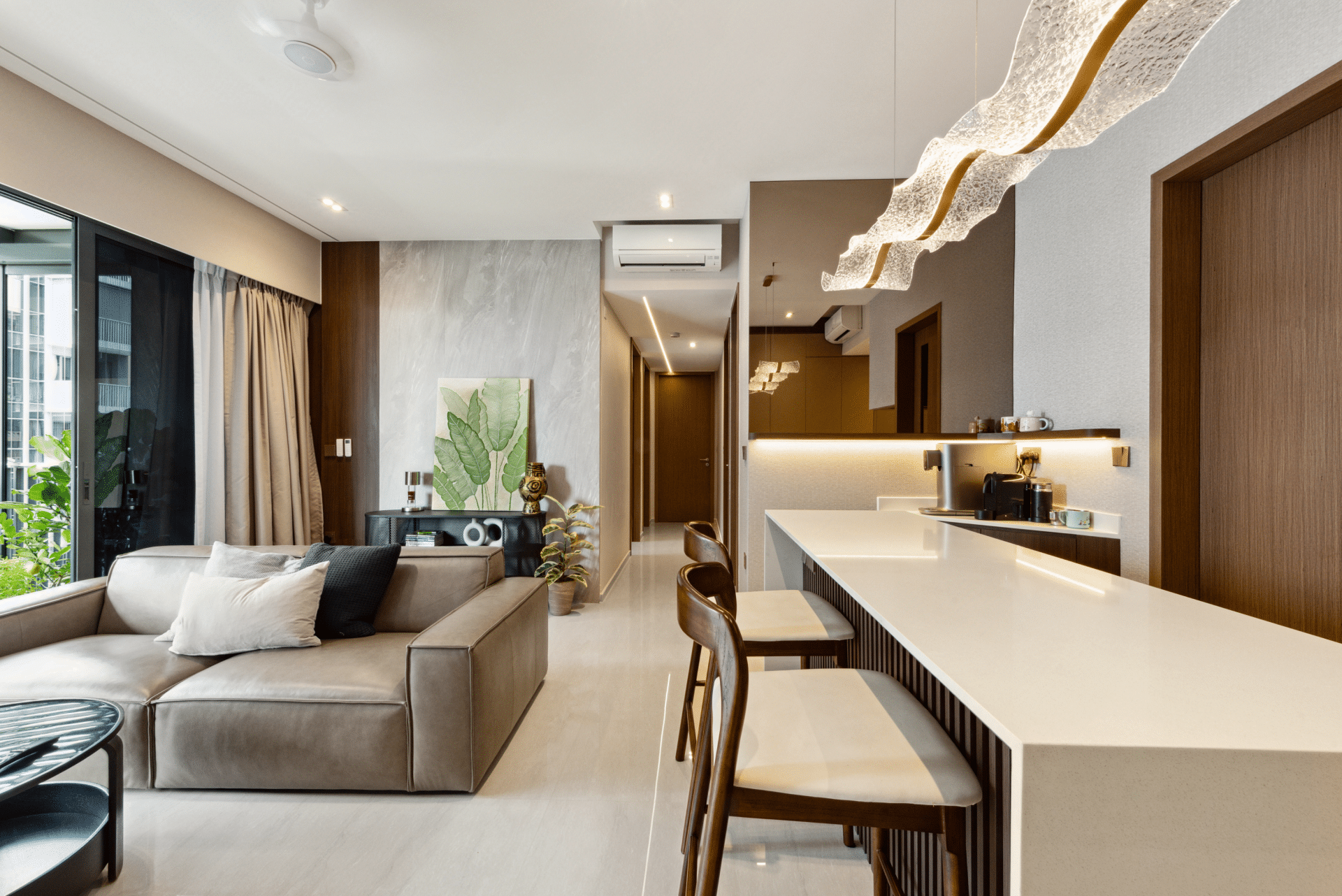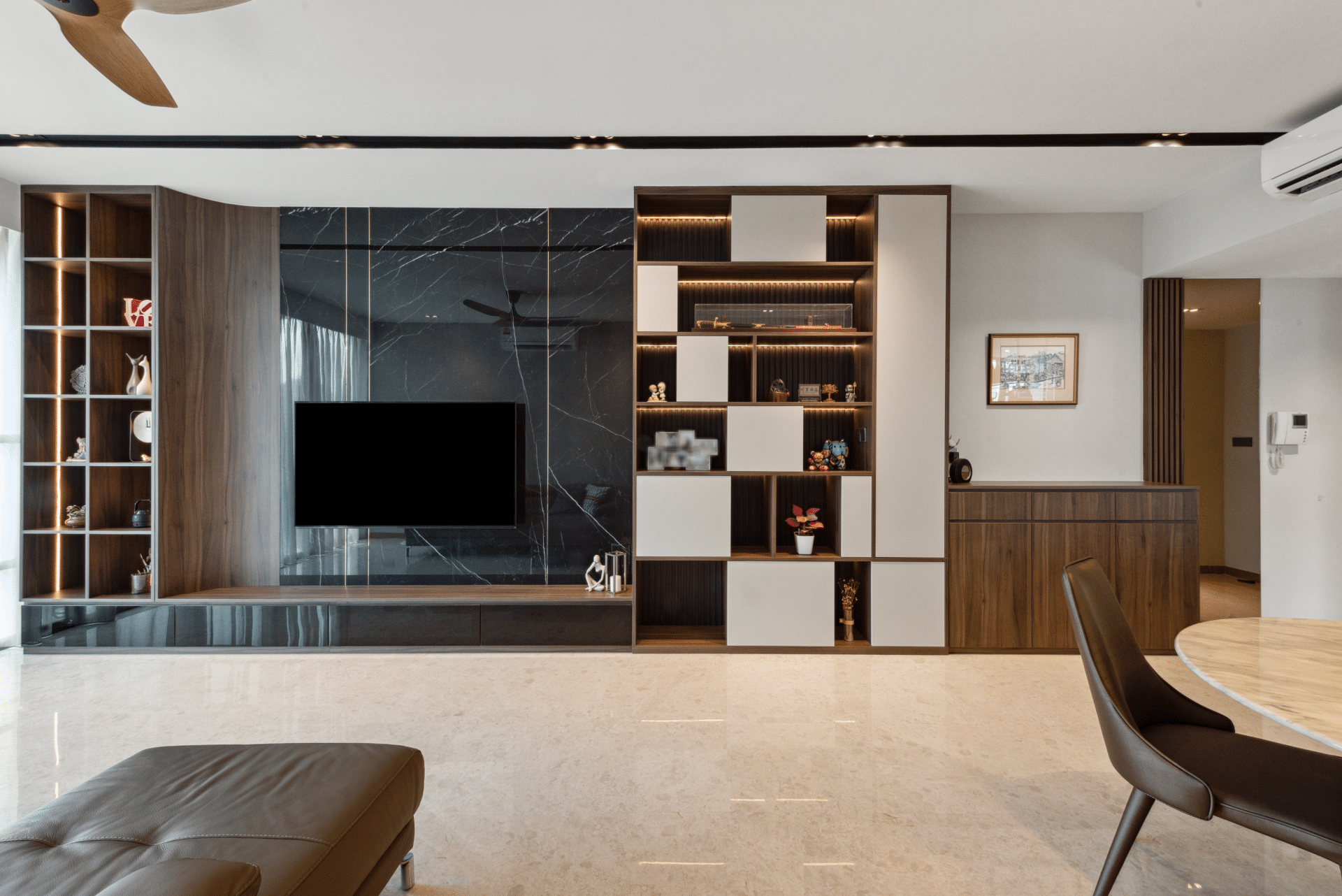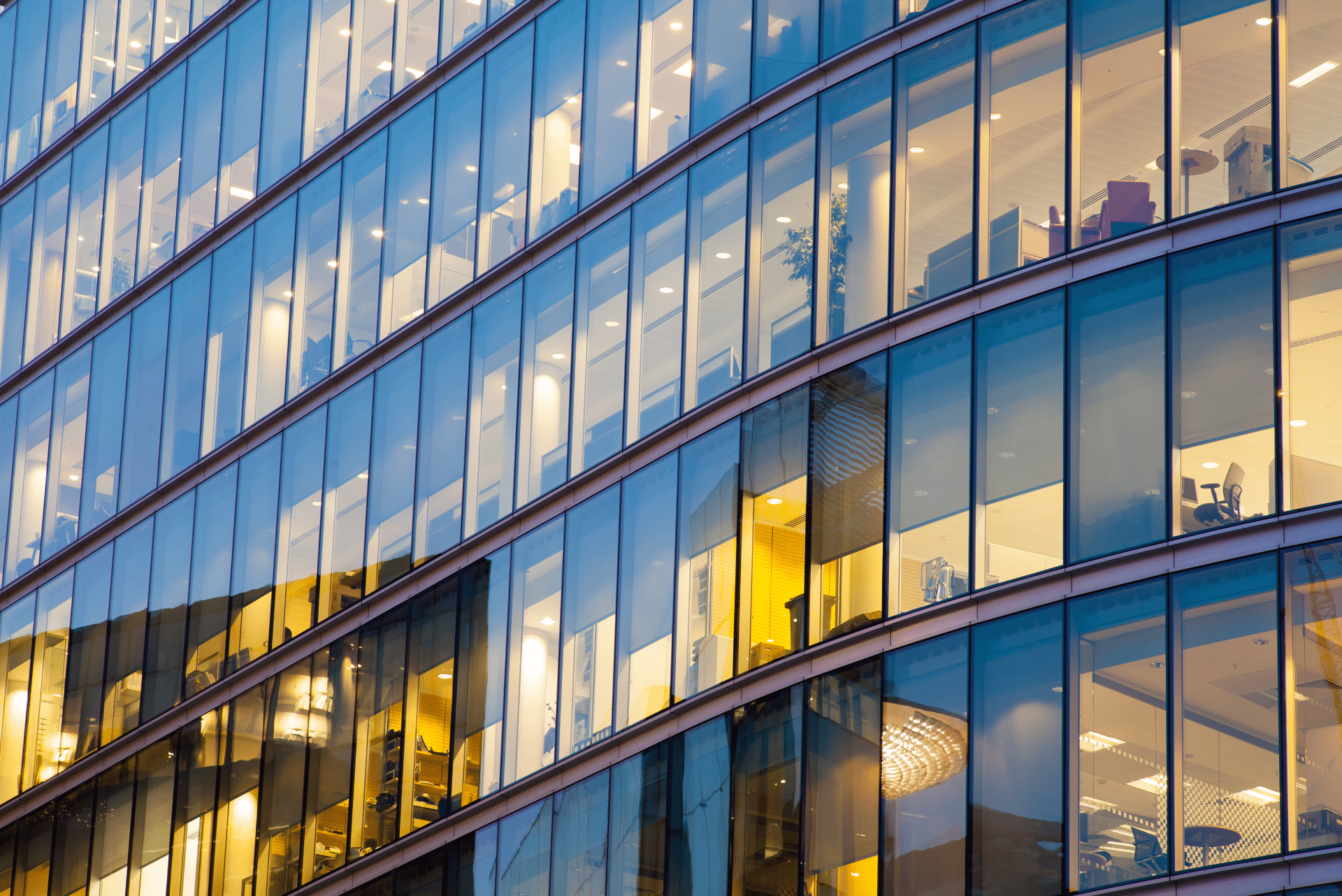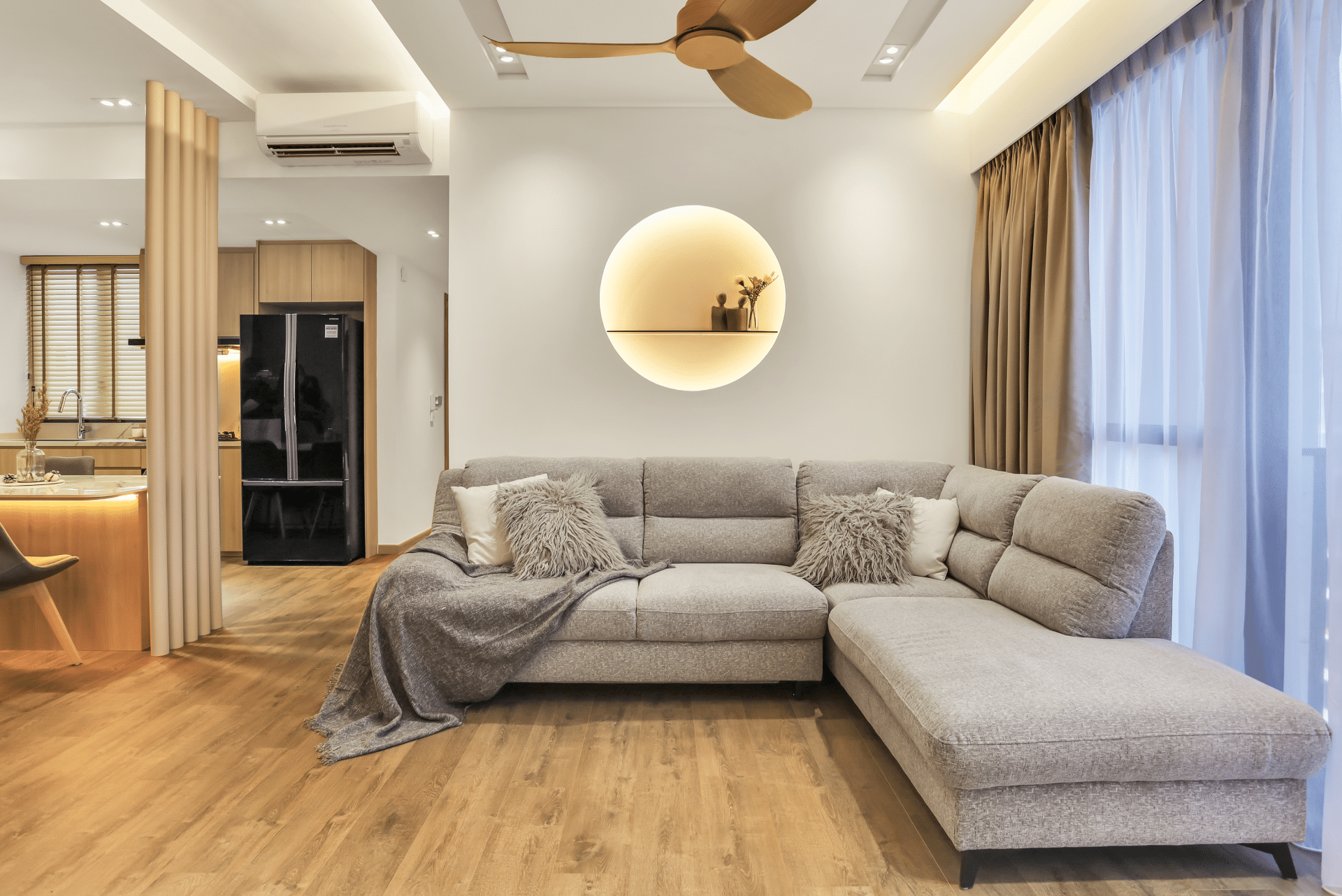Sustainable Design Tips For Your Singapore Home
Constructing and living in Singapore comes with its own specific set of challenges and opportunities when it comes to sustainability. As a dense, urban city-state on a small island, Singapore must make efficient use of limited space while also reducing environmental impact. At the same time, the tropical climate provides ample sunlight and heavy rainfall fit for harnessing renewable energy. In this blog, we will discuss Sustainable interior design tips.
Government Steps Towards Sustainable Home
Implementing even a few sustainable design guidelines creates a greener, eco-friendly home, reducing environmental impact and resource use. Small changes make a big cumulative difference, benefiting Singapore’s sustainable development. Sustainable choices reinforce the commitment to a green future.
Harness The Sun Through Solar Panels
To reach net-zero emissions by 2050, Singapore must transition to clean energy ASAP. Currently, 95% of electricity comes from natural gas. Though cleaner than coal, more renewables are needed. Solar energy is a top choice in this tropical location. Solar panels on rooftops of HDBs and other buildings are expanding via the Solar Nova program. Even vertical facades will have solar PV panels mimicking materials like brick or glass. Using sustainable materials is also crucial.
Connect With Nature Through Biophilic Buildings
Singapore used to be very green, with lush parks and trees everywhere. But with development, nature decreased. So, Singapore purposefully designed “biophilic” buildings to recreate connections. They incorporate living walls, gardens, natural light and ventilation, etc. This improves health, air quality, warmth control, and mood. Biophilic buildings also have lower utility bills and carbon footprints.
Ideal Projects
Singapore’s tropical climate and dense urban environment pose unique challenges for sustainable architecture. However, innovators here have pioneered solutions that integrate nature, conserve resources, and enhance livability. Examine these exemplary projects for top sustainable interior designer tips.
-
Nature
The natural world feels distant in Singapore’s commercial districts. Yet incorporating living elements creates healthier, more enjoyable spaces. Consider how thoughtfully designed buildings intertwine interior areas with lush exteriors through open layouts or transitional zones.
At the Oasia Hotel Downtown, mesh veil-like screens cloak the structure in a vertical garden that helps cool the building. Four spacious sky terraces and nearly 1,800 planters integrate vegetation throughout, blurring lines between inside and out. Making your home feel more connected to nature need not entail dramatic interventions. Try simple touches like houseplants or foliage visible from indoor areas.
Gardens by the Bay’s iconic Supertrees demonstrate how manmade structures can harmoniously coexist with greenery. Their enormous vertical gardens introduce refreshing nature into the dense Marina Bay locale. The monumental scale is inspiring, but smaller-scale green features can also enliven homes. Consider adding a living wall, rooftop plantings, or window boxes to blend nature into your domestic sphere.
-
Welcome Breezes
Airflow makes Singapore’s climate more bearable, yet many spaces feel stagnant. Thoughtful architecture invites cooling breezes while blocking harsh sun and rain. Evaluate how structures utilize orientation, openings, and zones to usher in refreshing air. Consider applying such passive ventilation strategies to let breezes flow through your home.
Sited to maximize prevailing winds, the elongated Parkroyal on Pickering is oriented diagonally to the street grid. Its terraced configuration creates pressure differences, drawing air across outdoor decks and atriums. Strategically placed windows then funnel these breezes inside. Thoughtful orientation and window placement invite cross-ventilation, reducing air conditioning demands.
At the Oasia Hotel Downtown, the staggered tower form has four open zones with lush plantings that enhance airflow. The vegetation filters sunlight while allowing breezes to permeate the building. Well-positioned operable windows and other openings usher refreshing air indoors. Evaluate your home’s layout to find opportunities to guide exterior winds through. Carefully located windows or transitional spaces can become beneficial, breathable zones.
By showcasing leading local projects, this guide outlines sustainable strategies for Singapore’s unique context. Whether harnessing breezes, sunlight, or vegetation, thoughtful approaches can reduce environmental impact while creating healthier, more enjoyable living environments. Evaluate your home for opportunities to implement such innovative green design elements.
Tips For Sustainable Design In Singapore
With limited land, Singapore depends on imported water and food. Sustainable design improves efficiency, reducing reliance on imports. Here are the best sustainable interior design tips.
-
Choose Sustainable Flooring
Floors don’t often get a sustainability focus, but greener options do exist! Natural linoleum made from renewable cork and linseed oil makes durable, biodegradable flooring. Wood from responsibly managed forests offers a classic look. Bamboo and cork rapidly regenerate without heavy chemical use, too. Recycled rubber floors keep tires from landfills. Many sustainably sourced ceramic and porcelain tiles are also available. Mindfully treading sustains future floors!
Deforestation is rampant globally, but Singapore sources most wood legitimately. Regardless, choosing responsible wood products ensures no contribution to habitat loss. Look for Forest Stewardship Council certification indicating sustainable forestry practices. Rapidly renewable bamboo offers durability, too. Using less wood overall or selecting reclaimed wood is ideal. By selecting eco-friendly woods, homes here help conserve forests everywhere.
-
Implement A Green Roof
It is one of the best sustainable interior design tips. Green roofs provide sustainability benefits as “the fifth façade.” Layers of soil and plants atop buildings absorb heat, filter air, slow stormwater runoff, and create mini-ecosystems. Extensive roofs have low-maintenance varieties, whereas intensive roofs allow bigger plants. Reduced cooling needs offset their cost over time, too. Already, over 100 buildings here have green roofs! Homes can install simple modular versions. Turn unused space green.
-
Reduce Water Heating Loads
Heating water comprises up to a third of a building’s energy use. However, Singapore’s tropical location reduces this demand, giving it an advantage to start with. Further reducing hot water needs through low-flow fixtures, on-demand heaters, and behavior cuts waste. Heat pump water heaters reach higher efficiencies than conventional electric ones, too. Drain water heat recovery captures outgoing warmth to pre-heat incoming water! Small differences sustain big energy savings.
-
Install Low-Flow Plumbing Fixtures
The simplest home upgrades cut water and energy used for bathing, laundry, and dishes. EPA WaterSense fixtures reduce flow while sustaining pressure. Low-flow showerheads cut hot water needs. Faucet aerators add air for sensation using less. Water-efficient toilets, laundry machines, and dishwashers taper consumption, too, and some smart models respond to usage patterns. Small device changes make big differences in conservation! Choose fixtures sustaining liquid assets.
-
Conserve Water Through Collection And Reuse
With little land and water, Singapore excels at water conservation. Buildings utilize rainwater harvesting tanks to collect water for non-potable uses. Water recycling systems treat used water to “NEWater” standards for more uses. High-tech sensor faucets, low-flow fixtures, and waterless urinals also help cut usage. By supplying fresh and desalinated water as well, Singapore exceeds water self-sufficiency targets. Homes similarly can collect rainwater or install water-saving appliances.
-
Let Nature Cool Your Home
Air conditioners strain energy grids and warm the planet. But Singapore’s heat and humidity make cooling essential. Natural design strategies help cut the use of AC. Strategically planted trees, plus green walls and roofs, provide cooling shade. Allowing breeze airflow and implementing ceiling fans circulates cooler air, too. Smart home technology tailors AC use to occupancy. Ultimately, going one degree warmer when possible saves energy. Embracing nature’s cooling power sustains comfortable homes.
-
Monitor Usage With Smart Home Technology
Technology enables homes to operate sustainably automatically. Smart thermostats tailor temperature and cooling to occupancy patterns, lowering energy bills by up to 20%. Smart lighting dims or turns off lights when not needed. Smart plugs remotely shut off electronics, preventing phantom loads. Water leak sensors prevent waste and damage. These smart home technologies provide data to inform conservation efforts, too! Automating efficiencies sustains comfort and affordability.
-
Sustainable Lighting Solutions
Instead of wiring homes for canned lighting, utilize LED track plus rail techniques. Concentrate illumination precisely where it gets necessitated most. Accent uplighting onto architectural elements plus artwork instead of dispersing light uniformly. Skylights plus solar tubes pipe natural sunlight indoors to brighten living spaces, eliminating the necessity for artificial sources. Carefully situate them to prevent heat gain plus glare issues, though. Proper placement cuts down on daytime lighting requirements.
Water Conservation Tips
While much of Singapore enjoys reliable rainfall, national infrastructure still falters in supplying sufficient freshwater sustainably in the long term; hence, residents must utilize water judiciously without waste by incorporating conservation measures. Keep in mind these water conservation tips for sustainable interior design tips.
-
Limit Flow Volumes
Employ low-flow shower heads and faucet aerators to restrict water volume while maintaining pressure. Similarly, replacing outdated toilets allows modern high-efficiency models to operate with only 4.8 liters per flush rather than over 9 liters on older units. Repair any persistent leaks or drips that slowly drain away liters over days or weeks as well. Wise water use depends on both smart technology and vigilance.
-
Catch Rain Runoff
Capture clean rainwater in barrels or large underground cisterns from downspouts off roofs, holding thousands of gallons to leverage free of charge for irrigating ornamental plants or flushing toilets. Gravity supplies the harvested water on demand without pumps.
-
Filter And Reuse Greywater
Greywater reuse systems take gently utilized water from sinks, showers, tubs, plus washing machines, then redirect it toward landscape irrigation plus additional applications absent the necessity for purification. Special plumbing lets inhabitants access it devoid of cross-contamination through drinking water.
Renewable Energy Tips
Even compact residential properties can shrink reliance on fossil fuels by cleverly incorporating solar panels or other renewable systems into new builds or renovations. Such clean technology sees costs dropping continually, making adoption practical for everyday homeowners.
-
Adopt Rooftop Solar Photovoltaic
Entirely cover open south-facing roof spaces with angled solar cell segments to reliably generate substantial emissions-free electricity supplies year-round in sun-soaked Singapore. Paired with beefy battery storage systems, it allows for benefiting from far more of the sun’s harvested energy.
-
Consider Compact Wind Turbines
Although inconsistent, ambient wind present offers another emission-free supplemental electricity source. Miniature vertical axis roof-mounted wind turbine systems spin reliably from sporadic breezes, generating modest amounts of renewable energy to bolster solar.
-
Choose Sustainable Interior Décor Expert
Top sustainable designers thoroughly understand eco-friendly materials like bamboo, recycled metals, and non-toxic finishes. They know effective green building techniques like passive cooling, solar energy, and water recycling. Their expertise ensures true sustainability. Reputable sustainable designers have experience navigating green building standards in contact with IDID. Their expertise in materials, methods, and certifications brings sustainable home design from concept to reality.
Final Considerations
Small smart steps, when applied comprehensively in building and renovating Singaporean homes, allow for dramatically lighter environmental footprints. Seek quality materials and efficient technology available today to benefit both house occupants and the broader region alike. Sustainable solutions continue advancing, so stay appraised of the latest beneficial innovations for your unique property situation. Then, future generations will thank us all for valuing this shared fragile island ecosystem. We hope this blog post about sustainable interior design tips will be helpful.



